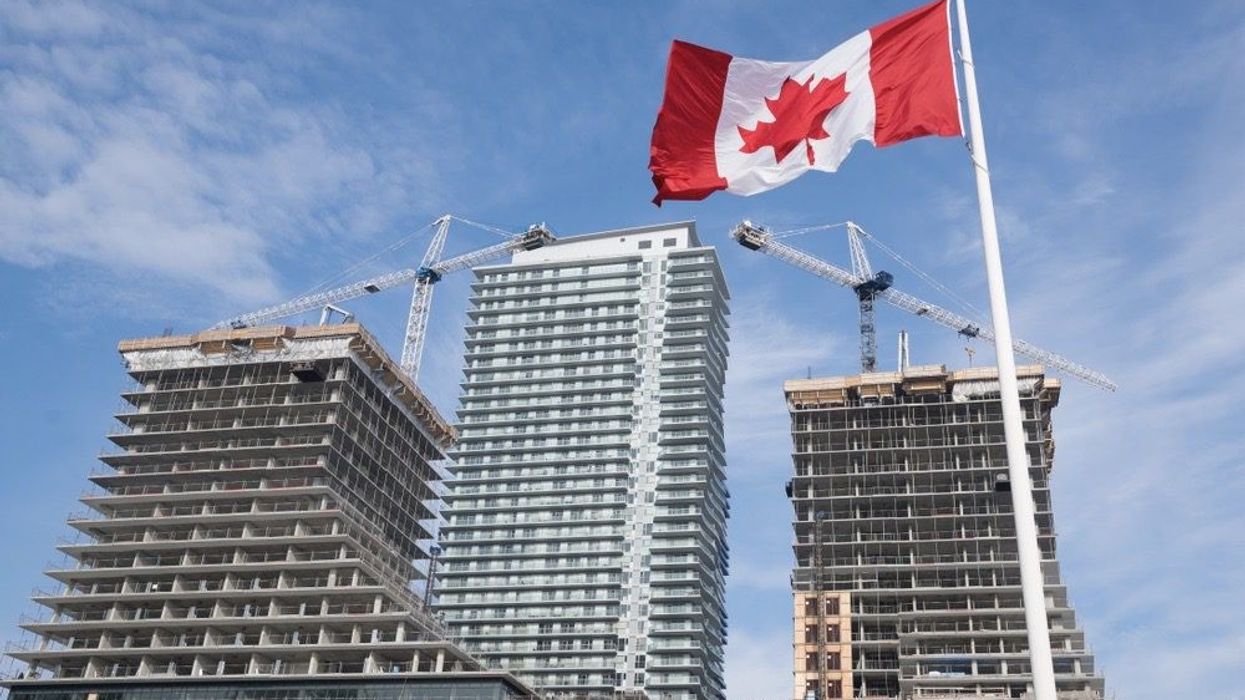By 2030, Canada will need close to six million new homes, and although housing start forecasts have been fairly bleak, it still stands to reason that the country (hopefully) teeters on the edge of a building boom.
Bearing in mind the sore need for new housing, a recent report from RBC digs into the climate-related challenges that will emerge in the development wake, as well as the opportunity to push forward into “a new greener era defined by novel building materials, smart building systems, and the rapid deployment of low-carbon heating and cooling.”
Authored by Senior Economist at RBC Climate Action Institute, Colin Guldimann, the report doles out some shock value in its by-the-numbers approach.
By 2030, it says, reiterating targets from the Canada Mortgage and Housing Corporation, Canada will need 5.8 million new homes, an increase of 40%, in light of current and future demand. To do this, the country will require more than $40B per year in capital investment.
Considering current practices and building codes, these structures will tack 18 million tonnes of greenhouse gas emissions onto Canada’s carbon footprint annually. And that’s not even considering emissions from the production of cement and steel.
But the real culprit: Canada’s existing buildings, which release around 90 million tonnes of greenhouse gases annually. RBC estimates that 60% of those aforementioned $40B funds will need be dedicated to retrofitting existing housing stock.
Rallying for Retrofits
Refurnishing, in some cases, decades-old building stock will be an enormous endeavour. According to RBC's report, 57 million sq. m (or 400,000 units) of residential space will need to be retrofitted in order to meet Canada’s 2050 climate targets. In addition, over 25 million sq. m of commercial space will need to be converted to low-carbon heating each year.
“For housing alone that would mean nearly tripling our current pace of conversion,” writes Guldimann. “But simply replacing aging buildings is costly and could create further upfront emissions. And there are ways to work with the structures we’ve got.”
READ: Just How Many Office Buildings in Canada Have Residential Conversion Potential?
But of course, there are downsides associated with retrofitting which may discourage individuals and businesses from opting to convert.
“Retrofits that improve air tightness and insulation can make heat pumps more cost-efficient, though landlords may need to vacate tenants, losing rent, and homeowners may have to sacrifice space to add insulation,” Guldimann continues. “For owners, the savings from retrofits may not make up for the cost, except when replacements were due anyway. And embodied carbon means early retrofits can even be bad for emissions in some cases.
“Still, every time our aging buildings need an upgrade, we must seize the opportunity. And there are enough commercial buildings nearing the end of life to keep us busy until the 2030s. We need to scale up a retrofit economy quickly, lest we miss the chance to ease the stress on our already overburdened electricity system.”
“New technologies will be essential"
In the race to retrofit, “new technologies will be essential,” says Guldimann. He points to heat pumps, which have already caught on in Atlantic Canada and BC, and stresses the importance of adopting this technology on a nationwide scale.
The logic seems fairly plain. Gas furnaces are the largest source of building emissions, and an eco-friendly counterpart stands to revolutionize the home heating industry -- but again, the report cautions of downsides that stand to hasten widespread adoption.
READ: Canadians Can Now Register to Receive Up to $10K Toward a New Heat Pump
In Toronto, for instance, homeowners will pay around $2,700 each year to heat their homes with a new, high-efficiency gas furnace and to cool it with air conditioning. Doing the same job and considering its higher sticker price, a cold climate heat pump would cost between $3,300 and $3,800. As such, the report suggests a carbon tax of $200 or more “would be needed to make heat pumps the clear financial winner.”
Incentive programs, such as Oil to Heat Pump Affordability Program, which kicked off in April, also stand to entice homeowners to make the switch. Meanwhile, bearing in mind that heat pumps rely on electricity, which costs four times more than natural gas, government subsidies can help homeowners “close cost gaps” in the longer term.
The report notes, however, the programs the government already has made available have yet to catch on in a meaningful way. For instance, just 19,000 households out of 16 million have taken advantage of the Canada Greener Homes Initiative over almost 18 months. That means that only $69M has been distributed out of the $2.6B potential available. City-level programs, such as Toronto’s Home Energy Loan Program, are even less successful, reaching just 245 homes since 2014.
A Higher Standard
New development should go hand-in-hand with reimagining Canada’s built environment, says the report, allowing for structures and entire communities to be designed from the outset with climate resilience and energy efficiency in mind.
“Starting from scratch, developers can more affordably create tighter 'envelopes' or structures that allow less air and heat to escape,” writes Guldimann. “They can also design around more energy-efficient technologies like heat pumps… This allows savings to materialize faster. And since heat pumps can both heat and cool spaces, this technology can also eliminate the need for both a furnace and an air conditioner in many parts of the country, cutting costs even further.”
Such operating savings could offset the added 5-10% upfront cost of constructing sustainable buildings. Mortgage policy changes -- such as longer amortization for insured mortgages on zero-emission homes -- and building code reform to ensure building codes across municipalities are equally supportive of net zero development, can help to move the needle further.





















